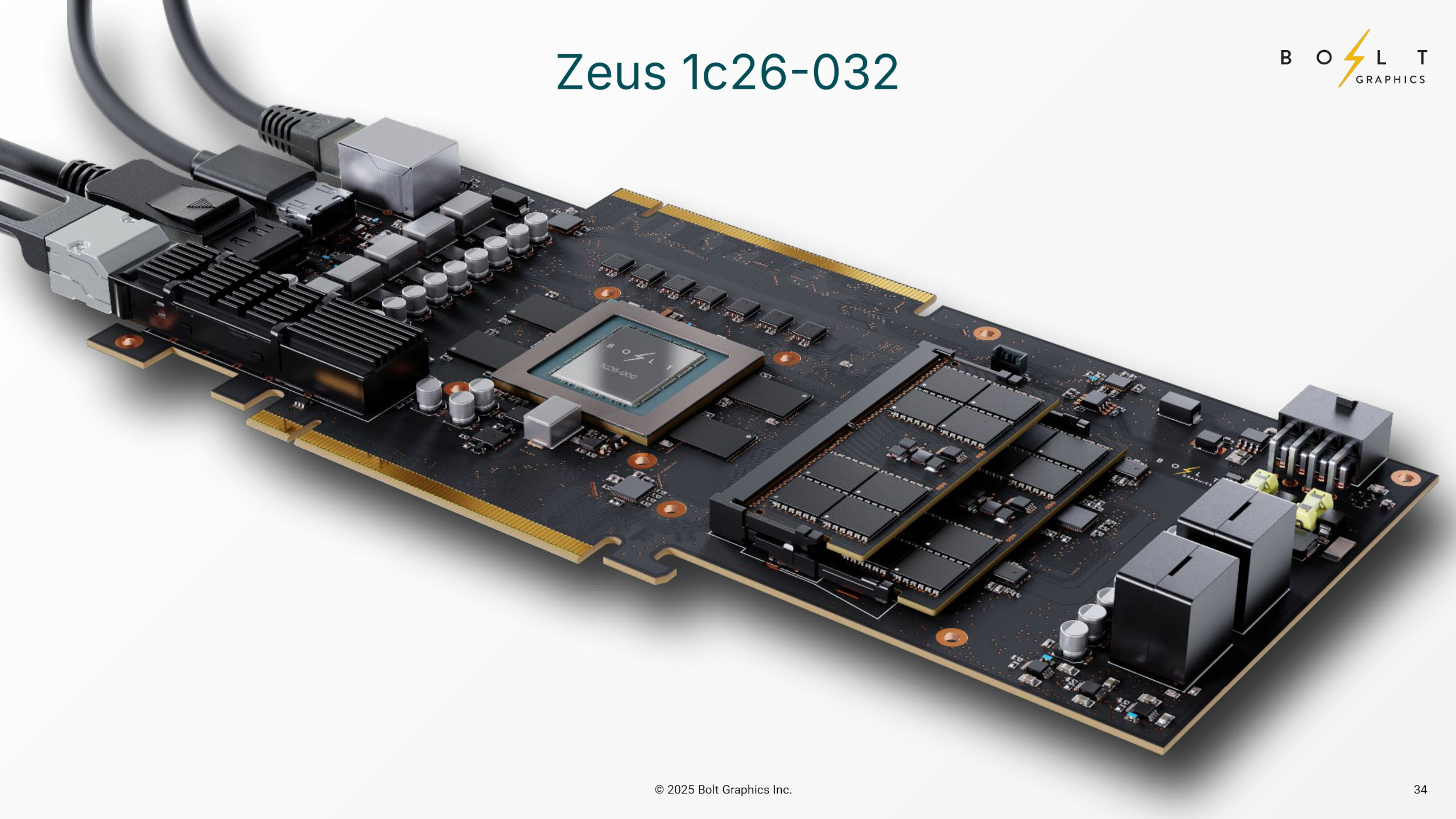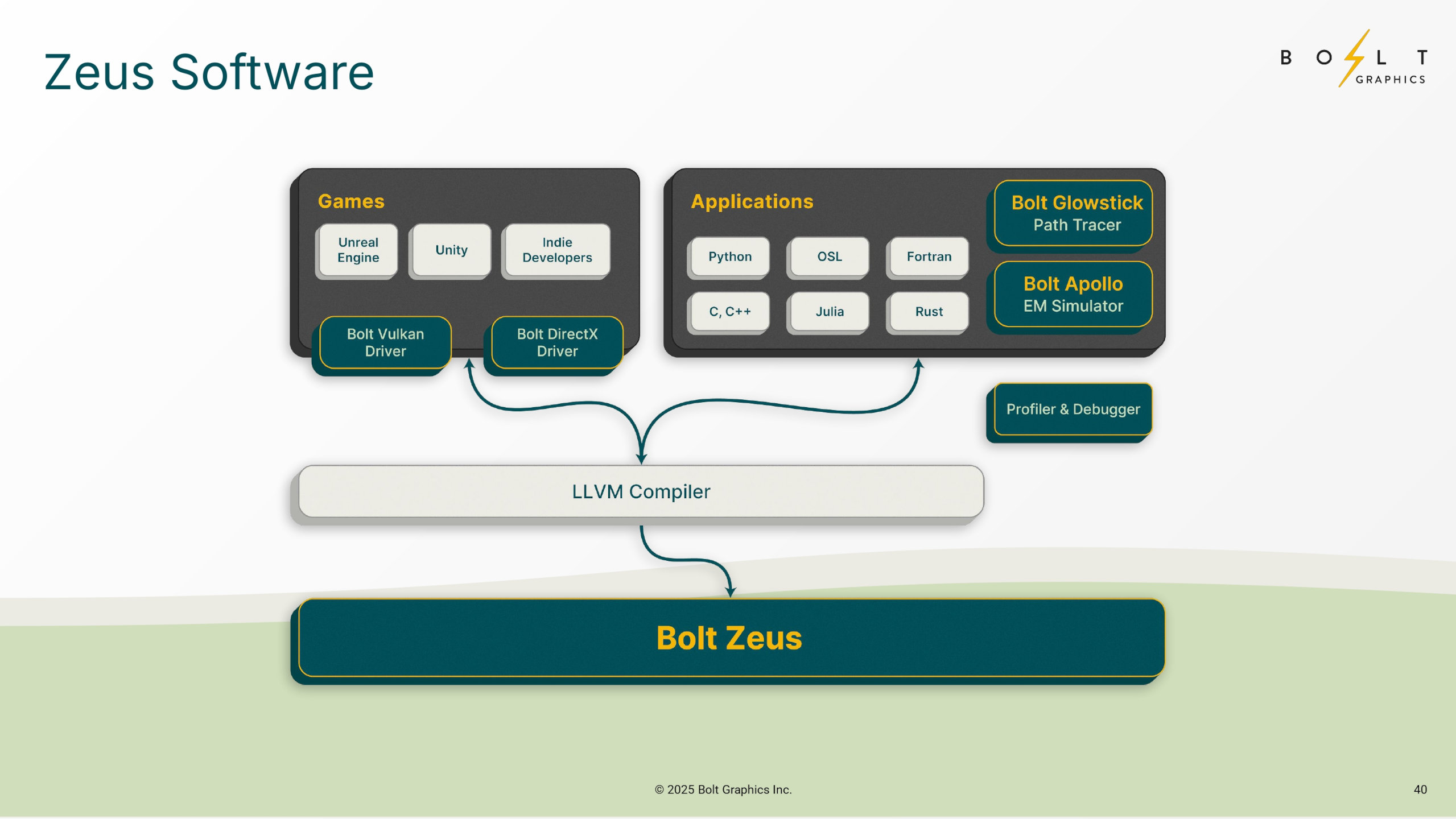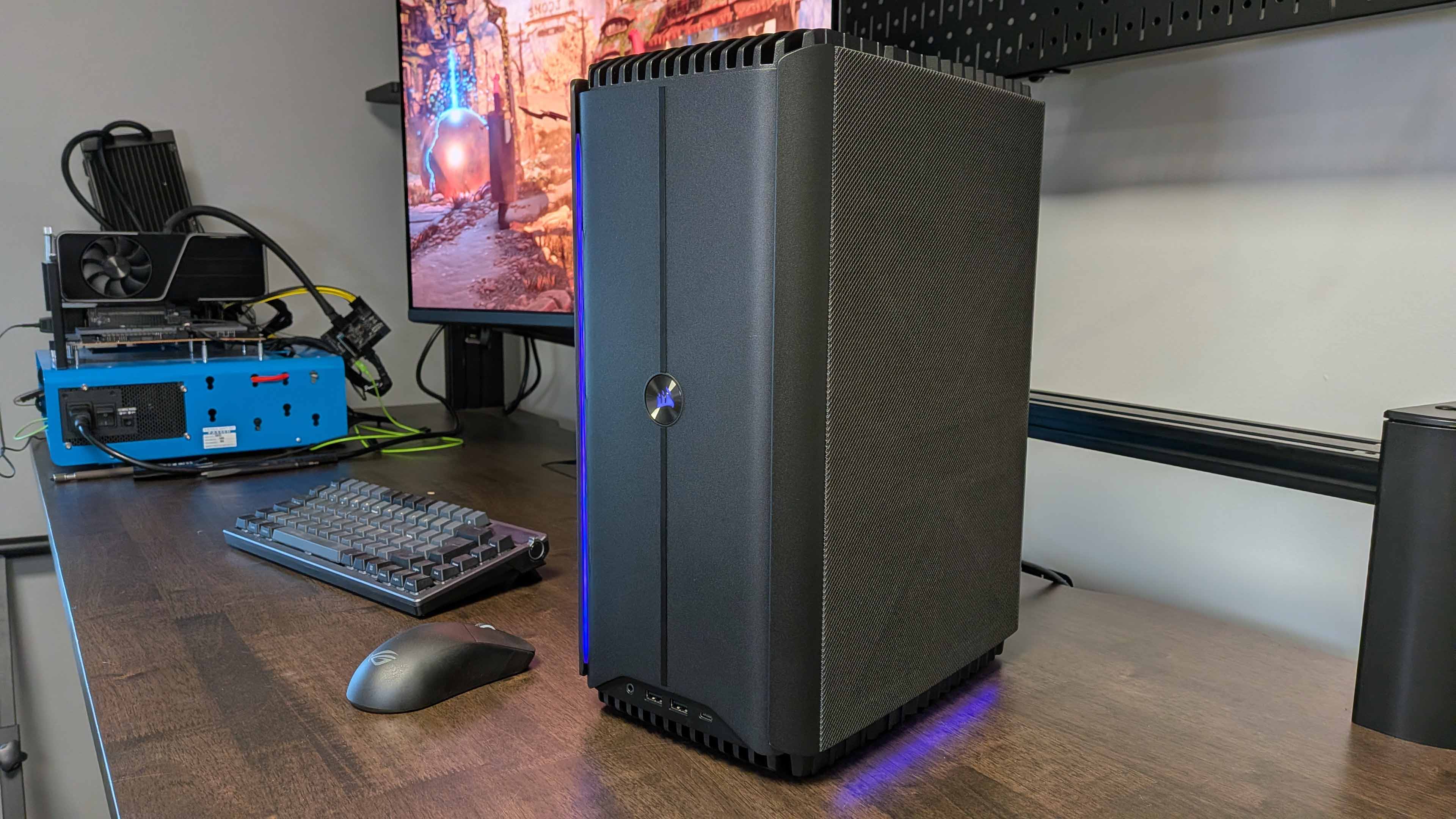Can a graphics card be 2.5x faster than an RTX 5090 in path tracing and use 80% less power? Bolt Graphics claims its Zeus GPU-powered models do just that
Don't forget: theoretical performance is theoretical. And theoretically, this ain't so hot.
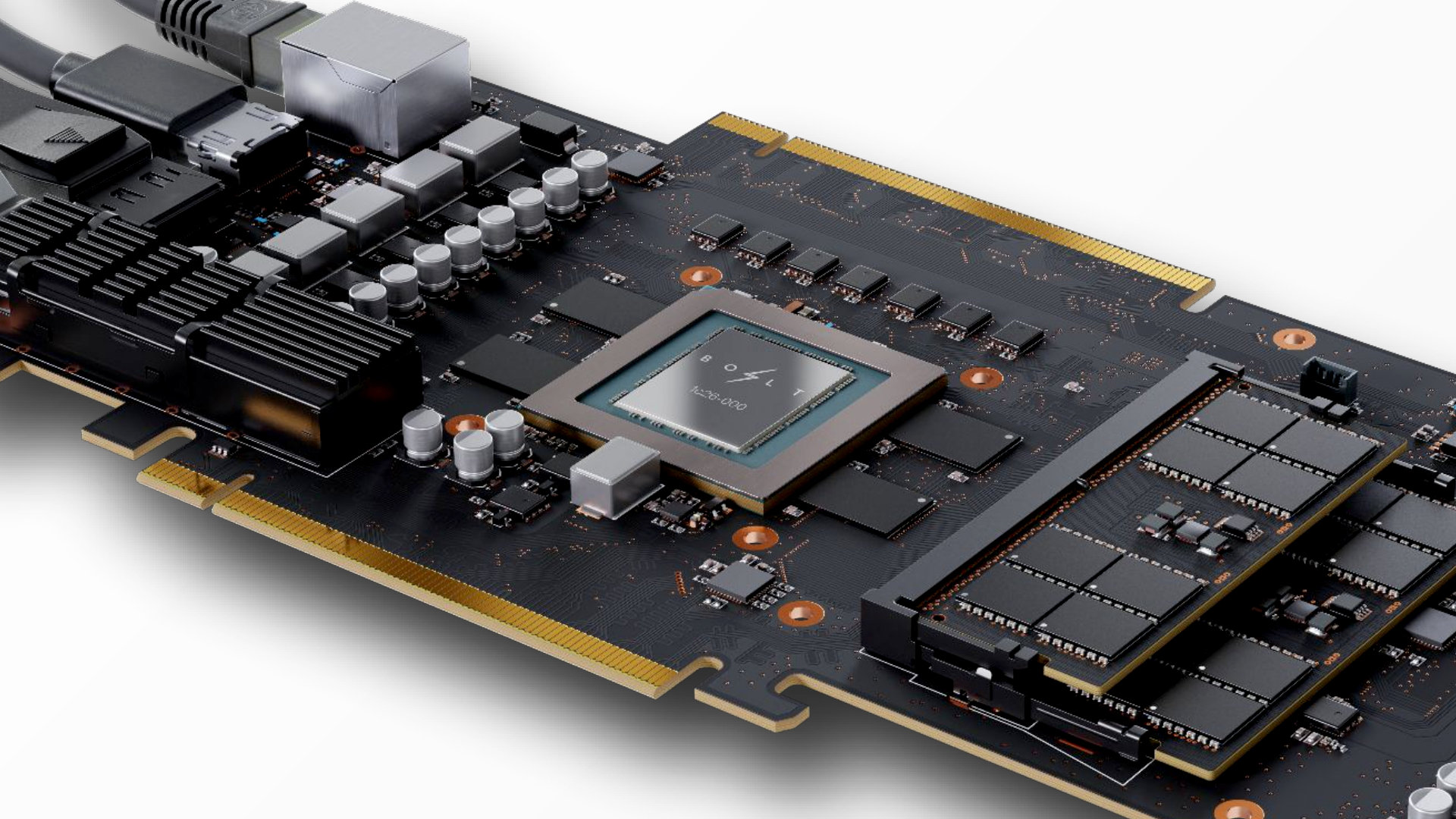
When Intel re-entered the gaming graphics card market in 2022, there was hope that, at long last, AMD and Nvidia would have some real competition in the world of GPUs. Alas, it was not to be, except in the entry-level sector, but one new company reckons it has the goodies to make RTX 50-series cards look so slow and inefficient that you'd think they were from the last decade.
The company in question is Bolt Graphics, and it has recently published a host of details and performance claims for its line-up of Zeus GPUs (via TechPowerUp). The chips themselves and the graphics cards they reside in are unusual, to say the least. In Bolt Graphics' technical document (PDF warning), four cards are listed and compared directly to Nvidia's RTX 4090, 5080, and 5090, but I'll just compare a couple of them all in the table below:
| Header Cell - Column 0 | Zeus 1c26-32 | Zeus 2c26-128 | GeForce RTX 5090 |
|---|---|---|---|
Vector TFLOPS (FP64/FP32/FP16) | 5 / 10 / 20 | 10 / 20 / 40 | 1.6 / 105 / 105 |
Matrix TOPS (FP16/INT8) | 307 / 614 | 614 / 1229 | 818 / 1637 |
'Path tracing' | 77 Gigarays | 154 Gigarays | 32 Gigarays |
On-chip cache | 128 MB | 256 MB | 120 MB |
VRAM amount | 32 GB LPDDR5X + 2x DDR5 SODIMMs | 128 GB LPDDR5X + 4x DDR5 SODIMMs | 32 GB GDDR7 |
VRAM bandwidth | Up to 363 GB/s | Up to 725 GB/s | 1790 GB/s |
Board power | 120 W | 250 W | 575 W |
At the heart of the new design is the Bolt Zeus Cluster, a unit that comprises a single-threaded CPU with a separate vector core with FP64 ALUs. There's a large chunk of cache in the unit, along with 'graphics and other accelerators', plus a router (yes, really) for shifting data around.
The Zeus 1c26-32 has a processor that's a little like an AMD Ryzen, in that it has a compute chiplet connected to an I/O chiplet, which handles the PCIe interface and LAN sockets. The 2c26-64 and 2c26-128 variants pack an additional Zeus chiplet, whereas the 4c26-256 model houses four Zeus and four I/O dies.
If you think that's all a bit weird, then check out the VRAM situation. Rather than using ultra-fast GDDR6 or GDDR7, the cards have between 32 and 256 GB of LPDDR5X soldered onto the card—the same kind of RAM that's used in handheld gaming PCs. Should that not be enough memory, there are two, four, or eight SODIMM slots to stuff in some laptop RAM.
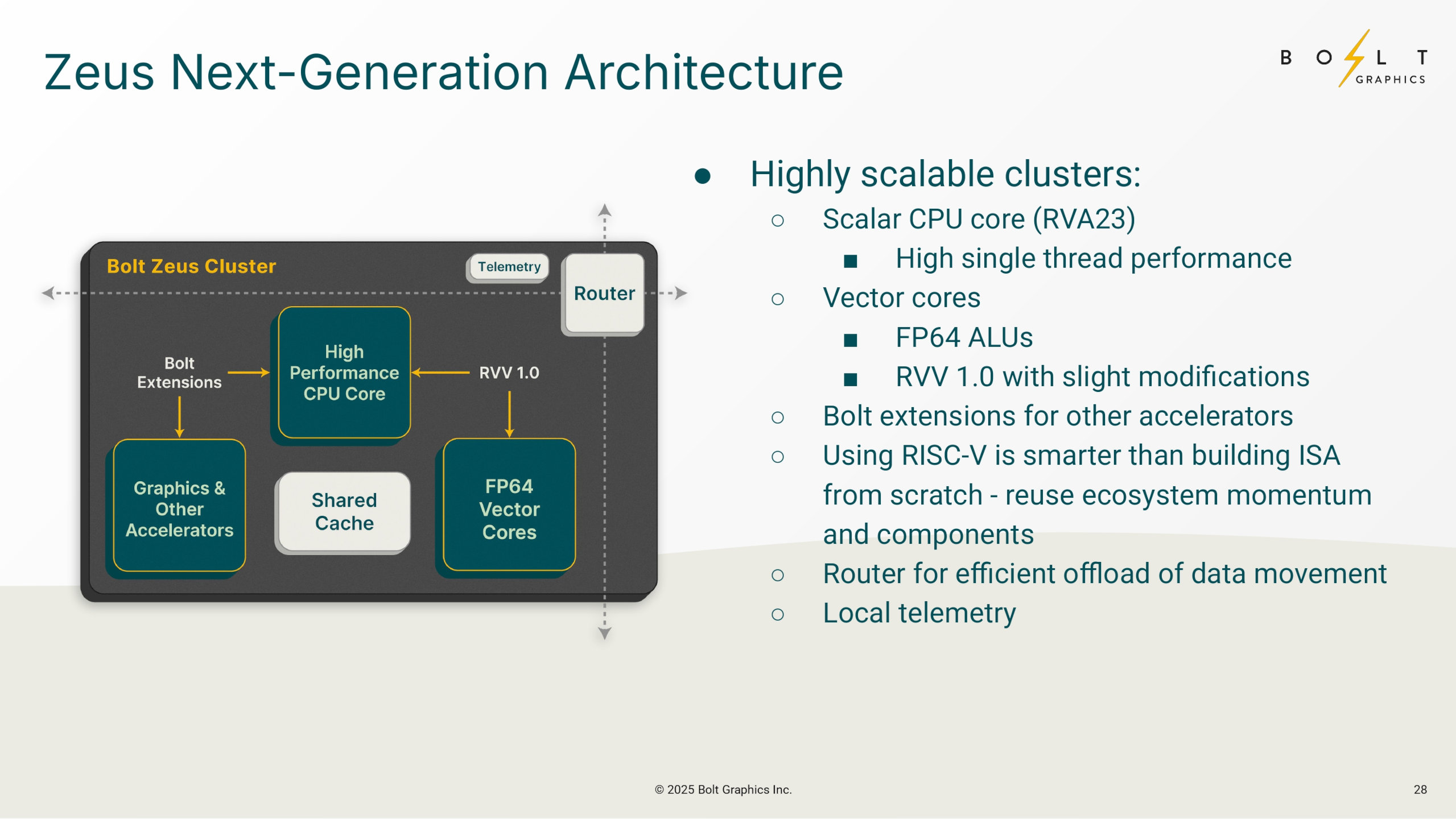
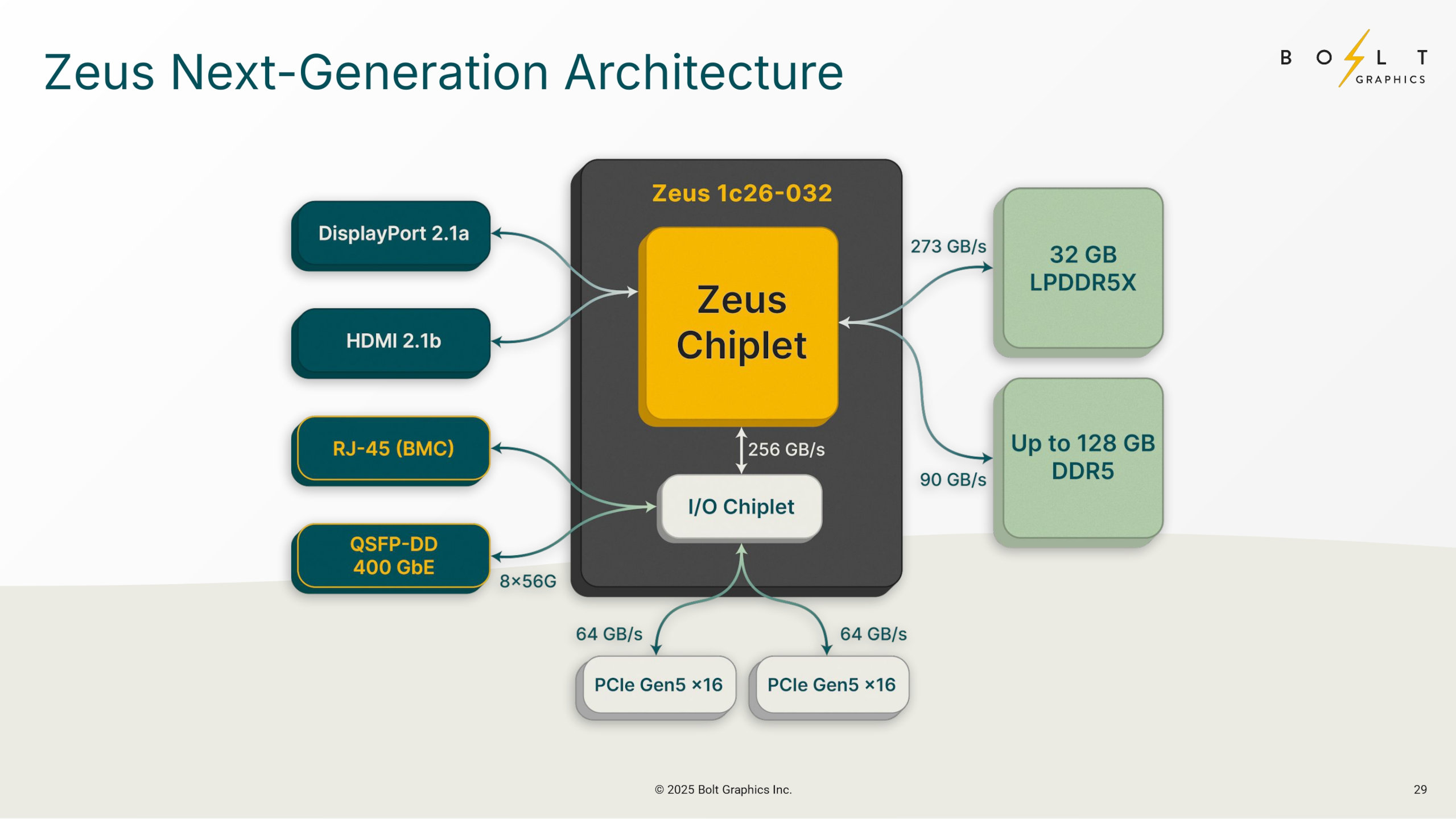
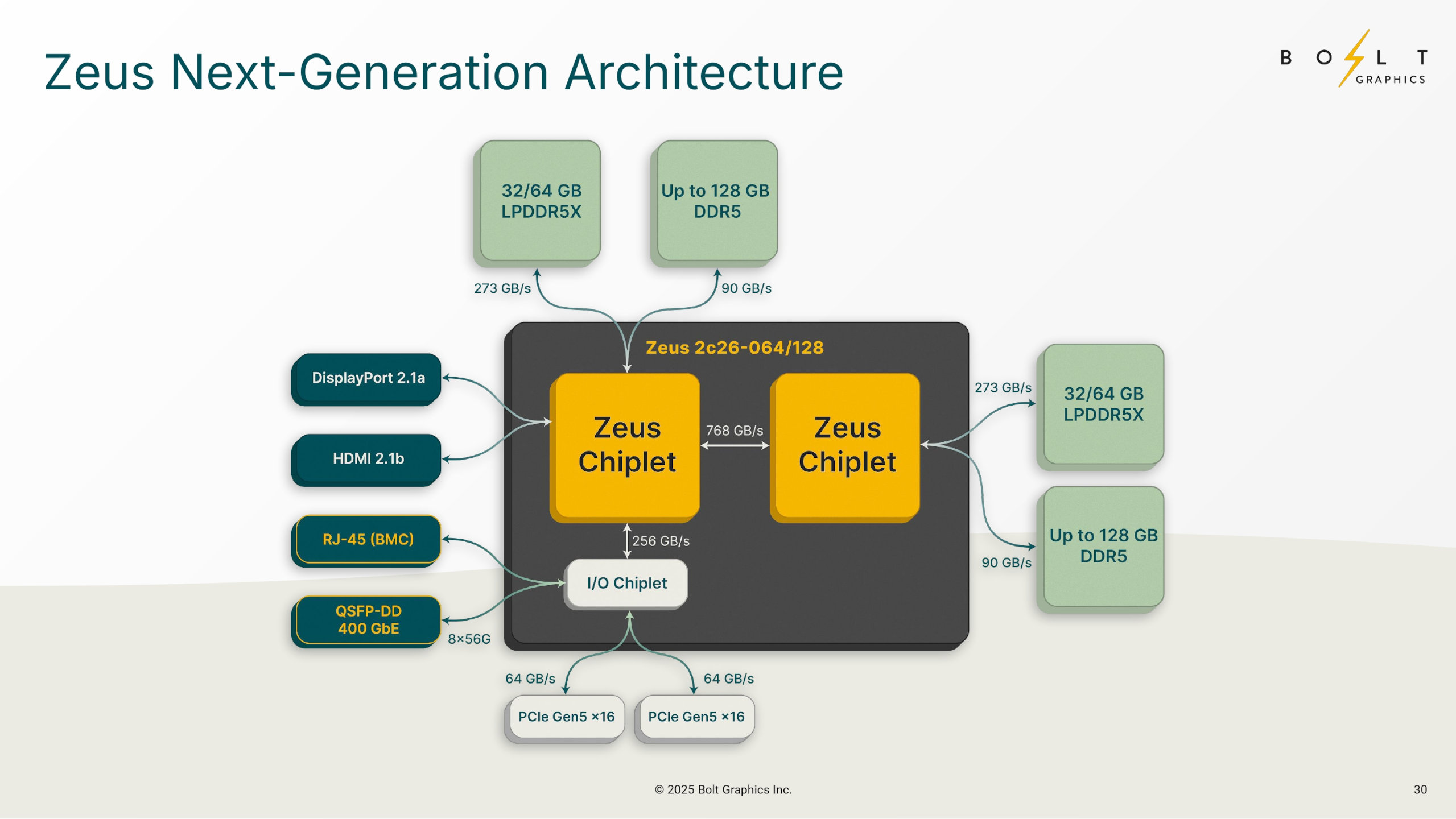
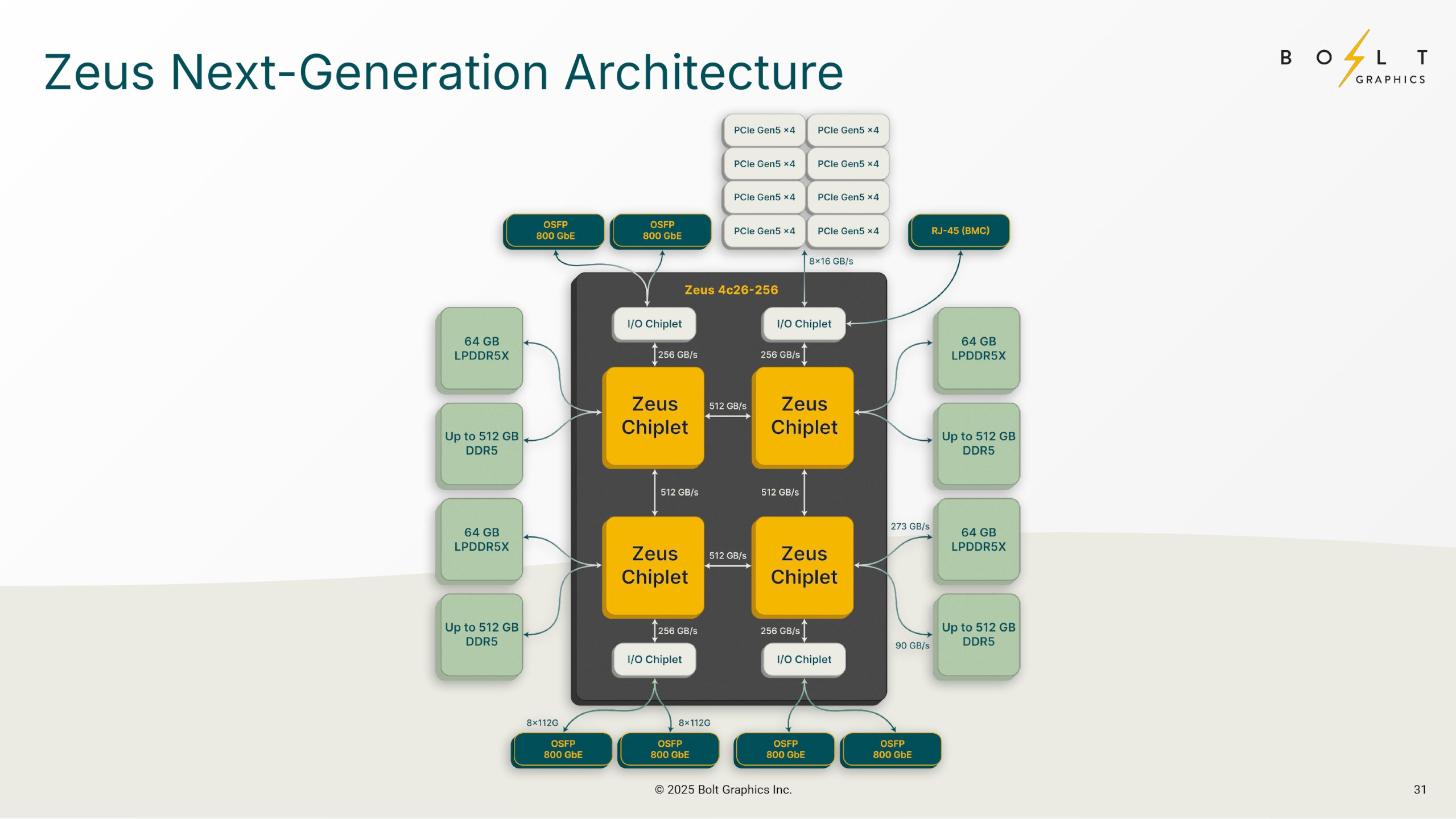

All of that oddness pales when compared to the performance claims that Bolt Graphics is touting, though. None of the figures in the technical document or website are actual, hands-on test results, as they're 'pre-silicon' results, theoretically determined by the software used to design the chips.
For gaming, Bolt Graphics reckons its Zeus GPU absolutely smashes the RTX 5090 when it comes to path tracing: 2.5 times more performance (77 vs 32 Gigarays) and all while using 80% less power (120 vs 575 W). While I certainly do not doubt that it's possible to make a highly specialised chip just for ray tracing, that alone doesn't make it great for gaming. For example, FP32 performance is crucial because today's games do almost everything via compute shaders.
Keep up to date with the most important stories and the best deals, as picked by the PC Gamer team.
And this is the first area where the Zeus chip falls way behind the 5090. The four-die 4c26-256 monster card sports a theoretical FP32 throughput of 40 TFLOPs; the RTX 5090 brushes that aside with 105 TFLOPs. The single-chip Zeus 1c26-32 only hits 10 TFLOPS in FP32, and that's lower than an RTX 3060.
Then there's the type of VRAM it's using and the amount of bandwidth on top. LPDDR5X isn't specifically designed for graphics use, nor is it especially fast when compared to GDDR7. The RAM modules in an RTX 5090 run at 28 Gbps, whereas Micron's best LPDDR5X tops out at 8.53 Gbps.
Sure, the Zeus chips appear to be sporting a lot more cache, but we have no idea how fast it runs, how wide its data lanes are, or what the read/write latencies are like. When a data request doesn't find what it needs in cache, you then have to rely on VRAM reads, and the Zeus cards will be like the aforementioned RTX 3060. Only worse, because it's LPDDR5X.
Bolt Graphics is aiming to have early access to developer kits in the last quarter of 2025, with PCIe card and server rack models starting mass production a year later. But even if the hardware appears on time, and really does run as claimed, there's the big question mark over software. For games, Zeus cards will purportedly have DirectX and Vulkan drivers, but anyone who has worked in this particular field will know just how incredibly challenging drivers are to get right.
My own view of this is that I reckon Bolt Graphics does have something that, in the right environmental conditions and with its own software, is incredibly powerful, albeit in very niche situations. But in the broad field of gaming, the hardware looks very underwhelming, and no amount of FP64 and path tracing power will make up for the lack of standard compute shader poke and VRAM bandwidth.
Heaven only knows just how desperately the gaming GPU market needs strong competition to bring prices back into the realms of reality, but I fear Bolt Graphics' Zeus isn't going to be our saviour. It's great that the company exists in the first place, and new tech is always cool to see, so with luck, it might be able to push through its awkward, early stages (much like how Nvidia had to with its first GPU) and eventually give us a little light at the end of the bleak graphics card tunnel.

1. Best overall: AMD Radeon RX 9070
2. Best value: AMD Radeon RX 9060 XT 16 GB
3. Best budget: Intel Arc B570
4. Best mid-range: Nvidia GeForce RTX 5070 Ti
5. Best high-end: Nvidia GeForce RTX 5090

Nick, gaming, and computers all first met in the early 1980s. After leaving university, he became a physics and IT teacher and started writing about tech in the late 1990s. That resulted in him working with MadOnion to write the help files for 3DMark and PCMark. After a short stint working at Beyond3D.com, Nick joined Futuremark (MadOnion rebranded) full-time, as editor-in-chief for its PC gaming section, YouGamers. After the site shutdown, he became an engineering and computing lecturer for many years, but missed the writing bug. Cue four years at TechSpot.com covering everything and anything to do with tech and PCs. He freely admits to being far too obsessed with GPUs and open-world grindy RPGs, but who isn't these days?
You must confirm your public display name before commenting
Please logout and then login again, you will then be prompted to enter your display name.
